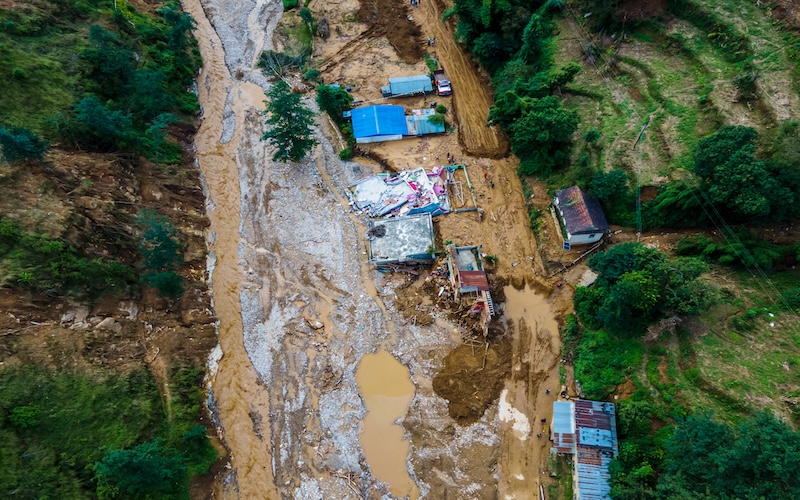How to Adapt Your Plans for Winter Hazards
Winter presents unique challenges that can transform minor emergencies into serious threats. Freezing temperatures, treacherous road conditions, and unexpected power outages demand careful preparation. Taking a proactive approach ensures not only your safety but also your ability to stay resilient and comfortable, no matter how severe the season becomes.
Insulating Your Home
Keeping your home warm is critical during winter storms or extended power outages. Invest in heavy-duty insulation for windows and doors to minimize heat loss. Plastic window films and draft stoppers for doors are inexpensive but effective solutions. If heating sources fail, use a tent indoors to trap heat in a smaller space, or designate one insulated room as your family’s shelter.
Wood stoves or fireplaces offer a reliable backup heat source, but ensure you have adequate ventilation to prevent carbon monoxide poisoning. Stockpile firewood, ensuring it’s dry and properly stored. For those relying on generators, store enough fuel and test your system before the season starts.
Winterizing Vehicles
Winterizing your vehicle is essential for safe travel during icy or snowy conditions. Equip your car with snow tires for better traction and keep chains on hand for unexpected conditions. Regularly check antifreeze levels, battery health, and windshield wipers to avoid breakdowns.
Always carry a winter-specific emergency kit in your vehicle, including:
- Blankets
- Extra clothing
- High-energy snacks
- A flashlight
- A portable phone charger
Sand or kitty litter can help provide traction if your vehicle gets stuck, while a collapsible shovel is indispensable for digging out of snowdrifts.
Clothing for Extreme Cold
Your clothing is your first line of defense against freezing temperatures. Layering is essential; start with moisture-wicking base layers to keep sweat off your skin, followed by insulating layers like fleece or down. Finish with a waterproof, wind-resistant outer layer to shield against the elements.
Don’t neglect extremities—wear insulated gloves, hats that cover your ears, and wool socks paired with waterproof boots. For those working outdoors, hand and foot warmers provide extra protection against frostbite.
Stockpiling Winter Supplies
Winter prepping requires a shift in your stockpiling priorities. In addition to the usual food and water supplies, focus on items that address cold-weather hazards. Ready-to-eat meals are ideal when cooking isn’t possible, and thermal blankets are invaluable for retaining body heat.
Stockpile rock salt or sand to manage icy walkways and avoid slips and falls. Keep a stash of emergency candles, battery-powered lanterns, and hand-crank radios for light and communication during power outages. Also, consider storing a snow rake to prevent excessive snow buildup on roofs, which can lead to structural damage.
Managing Power Outages
Winter power outages bring heightened risks, including frozen pipes and spoiled food. Keep faucets dripping slightly to prevent pipe bursts and insulate exposed pipes with foam covers. A backup power source, such as a generator, is a critical investment, but it’s vital to operate it outdoors in a well-ventilated area.
Prepare your refrigerator and freezer by consolidating items and using ice packs to extend cold storage during outages. Keep manual tools like can openers accessible when power is out.
Navigating Outdoor Hazards
Winter weather brings increased risks of hypothermia and frostbite, particularly for those spending extended time outdoors. Always inform someone of your location and estimated return time when venturing out in severe weather. Use landmarks and a compass rather than relying solely on GPS, which may fail in extreme cold.
In blizzard conditions, stay put if you become disoriented—wandering can increase the risk of exposure. Focus on conserving body heat and signaling for help using bright-colored clothing or reflective materials.
Monitoring Weather Patterns
Winter storms often strike with little warning, making real-time weather updates essential. Invest in a reliable NOAA weather radio for continuous updates, even during power outages. Familiarize yourself with the terminology used in winter weather advisories, such as warnings, watches, and alerts, to gauge the level of risk accurately.
Conclusion
Preparing for winter hazards demands a strategic approach to account for the unique challenges and treacherous conditions. Winterizing your home, ensuring your vehicle is equipped for emergencies, and stocking essential supplies are key steps to safeguarding against severe weather. Staying informed about weather changes and having a clear action plan can make all the difference in navigating the season safely and confidently.




